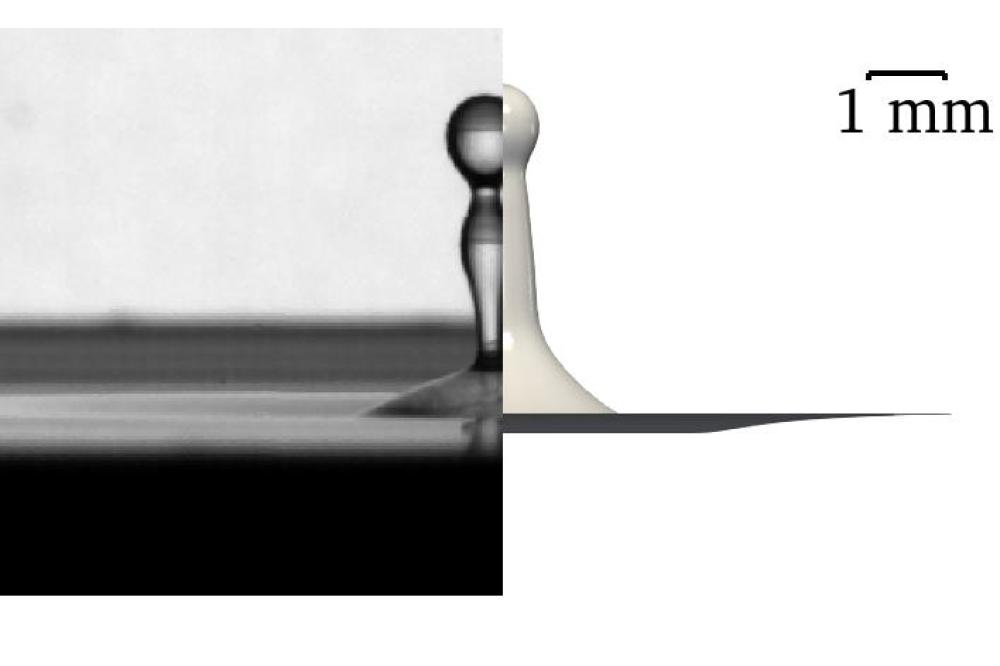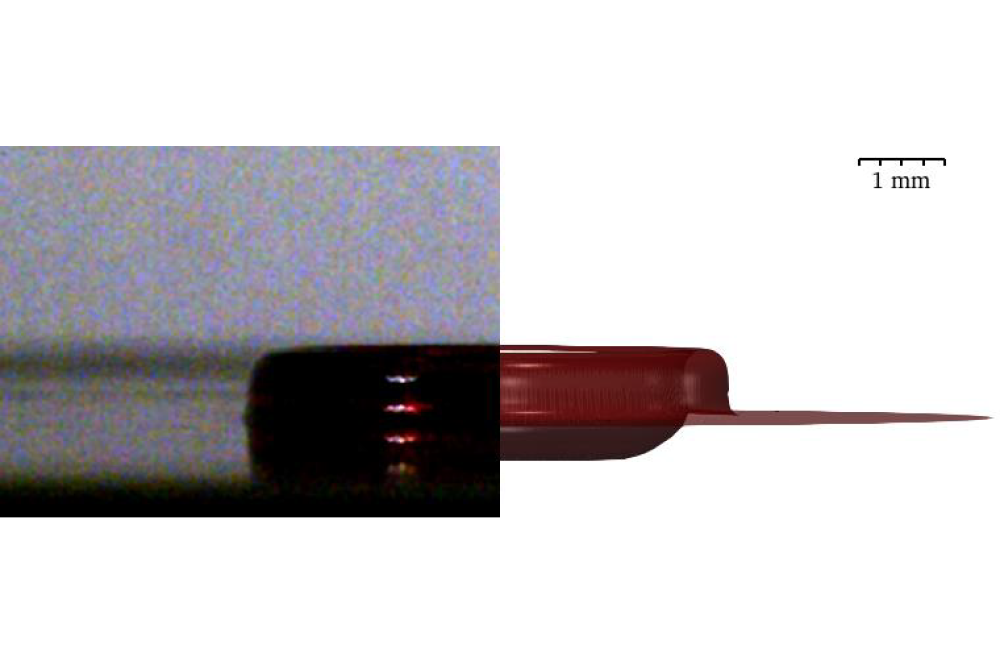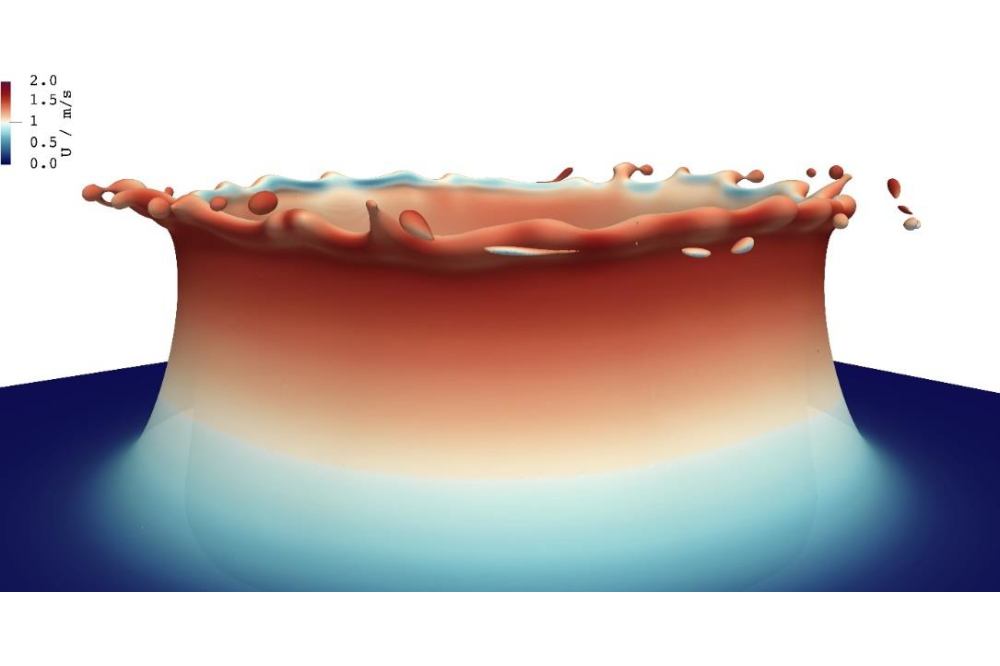Numerical Simulation of the Interaction Between a Drop and a Liquid Wall Film
Introduction
In internal combustions engines and in systems for exhaust gas aftertreatment, sprays interact with liquid wall films. The impact of fuel drops, for instance, may release oil from the lubricating wall film into the combustion region causing pre-ignition. Fundamental understanding of this interaction and its proper modelling are essential to increase efficiency while reducing emissions. Using our two-phase (N = 2) diffuse interface phase-filed interface capturing method we investigated the silicone oil drop impact onto liquid film of the same liquid without generation of secondary droplets using Direct Numerical Simulation. Due to rotational symmetry of the impact process we used an axisymmetric computational domain and utilized Adaptive Mesh Refinement (AMR) technique for resolving the diffuse interface with sufficient number of cells. The results of the numerical investigation were compared with high quality time-resolved experimental data and were in a good agreement. We further enhanced our two-phase (N=2) diffuse interface library in a consistent and conservative manner to incorporate multiple (N>2) immiscible, incompressible and isothermal phases. Numerical simulations were performed for validation of our recently developed N phase library.
Methods
Our methodology is based on a diffuse interface phase-field interface capturing method, which we implemented in OpenFOAM (FOAM-extend 4.1/5.0). The phase-field method is an energetic variational formulation originally based on the work of Cahn and Hilliard where the interface is composed of a region of finite thickness resembling realistic interfaces.
Results
The results of the numerical investigation were compared with high quality time-resolved experimental data for three different Weber numbers and a fixed film thickness. Impact outcomes with characteristic morphologies of deposition, crown formation including the formation of a dome-like structure or a Worthington central jet were observed and the evolution of the crown top diameter, base diameter and height were measured and compared with the experimental data. A comprehensive set of benchmark cases such as the floating liquid lens problem, rising bubble in two stratified layers problem, rising bubble in three stratified layers problem, and the four-phase fluid mixture problem were considered for validation of our N phase library. Moreover, numerical simulations of drop impact onto thin liquid film of non-identical immiscible liquids has been carried out and compared to in-house experimental results.
Discussion
The numerical investigations were performed for low to high energy drop impact process onto thin liquid films using the diffuse interface phase-field method. It was found that accurate calculation of the interfacial energy plays a significant role in correct prediction of the impact process particularly for moderate to high energy impact. Therefore, an effective formulation for the interfacial energy term was proposed and tested. The numerical results were in a good agreement with the experimental data. Furthermore, we have performed validation of our new phase-field solver for an arbitrary number (N≥2) of fluid phases against a broad band-width of different literature-known numerical tests and benchmarks for multiphase flows. The accuracy of the implemented diffuse-interface model has been shown for N=3 phases against a comprehensive set of benchmark problems. The numerical method also showed a very good qualitative agreement against in-house experimental study of drop impact onto thin liquid film for non-identical immiscible liquids. We have demonstrated the potential of the method for simulation of N=4 phases. The main objective has been to substantiate the physical fidelity of our new diffuse-interface model library and solver, demonstrating suitability for flows of multiple fluid phases, using the FVM with support for unstructured meshes of general topology.






